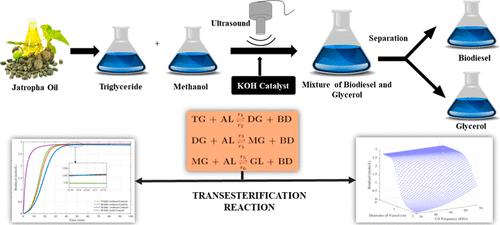Our official English website, www.x-mol.net, welcomes your
feedback! (Note: you will need to create a separate account there.)
通过超声波技术提高生物柴油产量:一项数学研究
ACS Omega ( IF 3.7 ) Pub Date : 2024-04-25 , DOI: 10.1021/acsomega.4c01729 Xianbing Cao 1 , Sk Mosaraf Ahammed 2 , Siddhartha Datta 3 , Jahangir Chowdhury 4 , Priti Kumar Roy 2
Affiliation

|
生物柴油是替代性可再生能源之一,因其清洁、绿色能源而受到广泛关注。生物柴油的生产可以使用不同的来源,但最合适和经济的方法依赖于甲醇与来自麻风树果实的非食用植物油的酯交换反应。摩尔比、容器直径、催化剂浓度和超声波都对酯交换过程合成生物柴油有重大影响。在这些因素中,容器的直径和通过传质限制产生的超声波效应对反应的成功完成具有重大影响。在这项研究工作中,我们开发了一个数学模型来分析氢氧化钾催化剂存在下的三步酯交换过程和副皂化反应。该模型考虑了混合强度变化(包括超声波)对不同相传质的影响。使用修正的 Dittus-Boelter 相关性计算传质速率。 Pontryagin 采用最小原理的最优控制方法,以最小的成本最大化生物柴油的产量。这项研究的新颖性是我们从分析和数值结果中得出的,考虑到工业过程,超过 97% 的生物柴油产量转化率将在 50 kHz 超声波频率下获得,即 6:1 的甲醇:使用最优控制理论,在 50 分钟内麻风树与油的摩尔比和 1 m 的容器直径。

"点击查看英文标题和摘要"




















































 京公网安备 11010802027423号
京公网安备 11010802027423号